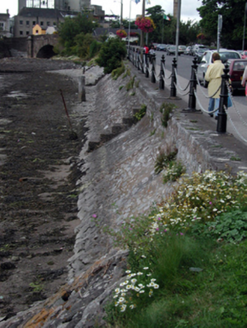Survey Data
Reg No
22821159
Rating
Regional
Categories of Special Interest
Architectural, Technical
Original Use
Building misc
In Use As
Building misc
Date
1810 - 1820
Coordinates
226237, 93314
Date Recorded
21/08/2003
Date Updated
--/--/--
Description
Causeway, opened 1816. Sited spanning Colligan River.
Appraisal
A causeway representing an important component of the early nineteenth-century civil engineering of Dungarvan. NOTE: A convenient crossing over the Colligan River was deemed essential to foster and support the economic prosperity of Dungarvan at the turn of the nineteenth century as, up to that time, the town was accessible only by a ford at Ballyneety to the north or a ferry between Roderick's Quay and Abbeyside to the south. Henry de la Poer Beresford (1772-1826), second Marquess of Waterford, believed that any bridge should be funded by the Grand Jury but William George Spencer Cavendish (1790-1858), sixth Duke of Devonshire, was prepared to cover the costs estimated at £8,000. William Atkinson (c.1773-1839), charged with the design of a multi-arched bridge, was instructed that it should be built of Runcorn sandstone, which, despite the cost of shipping, was cheaper than other available stone. Samuel Ware (1781-1860), who arrived in County Waterford in 1813 to inspect the works, 'found on the quay an immense quantity of freestone brought from England at an expense…of about 2 shillings per foot cube'. Ware recommended that the design be revised, reducing the number of arches from five to three, but the finished Devonshire Bridge (1813-6) ultimately featured only one arch (see 22821014) and the ambitious proposal by Atkinson for a balustraded bridge 'intended to be finished suitably to a nobleman's park or great city' was superseded by a functional causeway.



